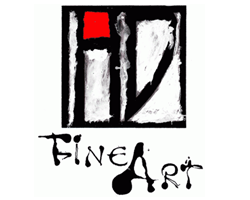Product Description
Giuseppe Napoli “Shamballa” Oil on board 1965


GIUSEPPE NAPOLI (1929-1967) Italian / American
“Shamballa” 1965
Oil on board
Signed: Napoli (scrafitto on front), Giuseppe Napoli 1965 “Shamballa”
(on back of board), Giuseppe Napoli (signed twice on stretcher)
H: 24” x W: 20”
A profoundly dynamic Abstract Expressionist painting by New York artist, Giuseppe Napoli. The painting is painted on board which is affixed to stretcher bars by staples.
Giuseppe Napoli was part of the New York School of the 1950’s and 60’s working out of a small studio in Greenwich Village. Napoli participated in numerous exhibitions but unfortunately his career was cut short by his suicide in 1967 the result of suffering from periods of depression.
Just as “Starry Night” is widely considered to have reflected the mental state of Van Gogh shortly before his death; this painting may also have reflected the mental state of Giuseppe Napoli who ended his own life only two years after creating this remarkable painting. The vigorous, heavy impasto, the ominous sun made impotent by the bold black ring that surrounds it and the jumbled landscape below, could be symbolic of the hope-against-hope, that eventually prevailed.
Giuseppe Napoli “Shamballa” Oil on board 1965
HUBERT SCHMALIX (1952-) Austria
Häuserbild 1989
Oil on canvas
Signed and dated on back: Schmalix 89
Exhibited: Galerie Krinzinger Vienna 1990 (Solo exhibition)
Illustrated: Nach Schiele, Tobias G. Natter and Thomas Trummer (Köln, Germany: Atelier Augarten, DuMont, 2006), p 142.
Provenance: Private Collection Vienna
For related works by Hubert Schmalix see: Hubert Schmalix, Lóránd Hegyi exhibition catalog (Museum Moderner Kunst StiftungLudwig Wien) November 19, 1994 – January 1995.
H: 85” x W: 49”
Hubert Schmalix was born in Graz, Austria, on December 17, 1952 and studied at the Vienna Art Academy from 1971 to 1976. By 1979 Schmalix was showing work at the forward-looking exhibition ‘Europa 79 – Kunst der 80er Jahre’ in Stuttgart. In 1983 the London Tate Gallery invited Schmalix to present work at ‘New Art’, an important survey of contemporary art. Schmalix has become well-known world-wide as an exponent of ‘New Art’, working with a retrospective glance at both classical art history and modern art. Schmalix focuses on the world of things and the human figure. Although the expressive gesture was the dominant feature of his 1980s work, it yielded early in the 1990s to stringent tectonic composition. In 1984 Hubert Schmalix went to the Philippines and on to the US, moving to Los Angeles in 1987. In 1986-87 Schmalix taught at the Academy for the Decorative and Applied Arts in Vienna and from 1997 he has been a professor at the Vienna Art Academy. Schmalix is a visiting professor at the University of California Los Angeles (UCLA). In 1993 his work was featured at the Venice Biennale and in 1998 he was awarded the Fine Art Prize of the City of Vienna. Schmalix has done several large fresco cycles in Salzburg and his work has been shown extensively at numerous international solo and group shows and most recently at Art Basel 2006.
The Kunstforum in Vienna is dedicating a major retrospective show to Hubert Schmalix from May 6th – July 12th, 2015.
“I’m not nervous or angry when I paint, but well rested and concentrated. Each stroke of the brush is important! I’ve painted a whole lot of beautiful pictures this way.” (Hubert Schmalix)
DOROTHY RENO GROVER (1908-1975) USA
“California Interior with black cat” c. 1950’s
Oil on Canvas
Canvas: H: 40″ x W: 34 1/2″
Framed: H: 42″ x W: 36 1/2″
Born in Dallas, TX on Sept. 10, 1908 into a pioneer Texas family. (Her grandfather was mayor of Dallas, and Brownsville, Texas is named for him.) Dorothy Reno moved to California with her family at age ten and settled in San Mateo. After graduating from Mills College, she obtained an M.A. degree from UC Berkeley. She wed radio announcer John B. Grover in 1931 and settled in Oakland. In 1971 she bought the former home of artist Glenn Wessels in Berkeley where she remained until her death.
